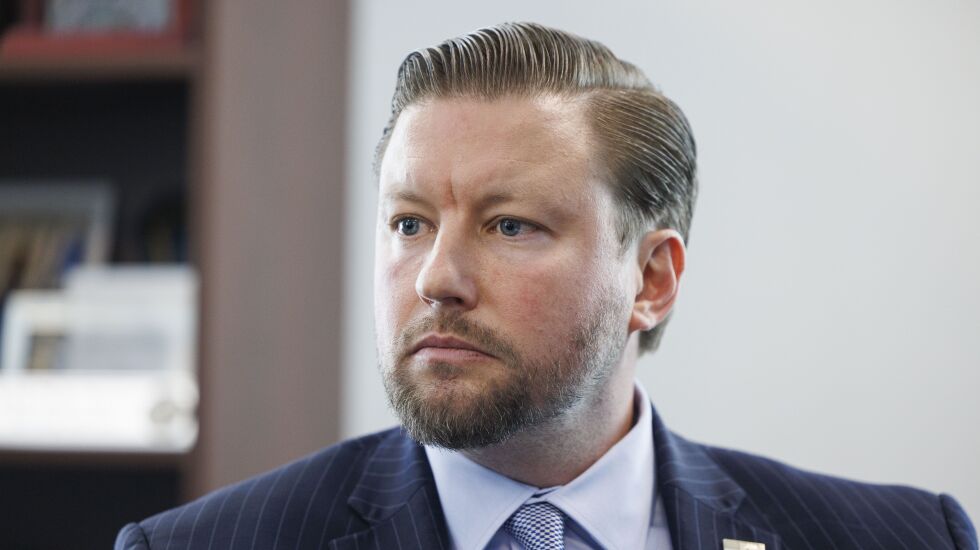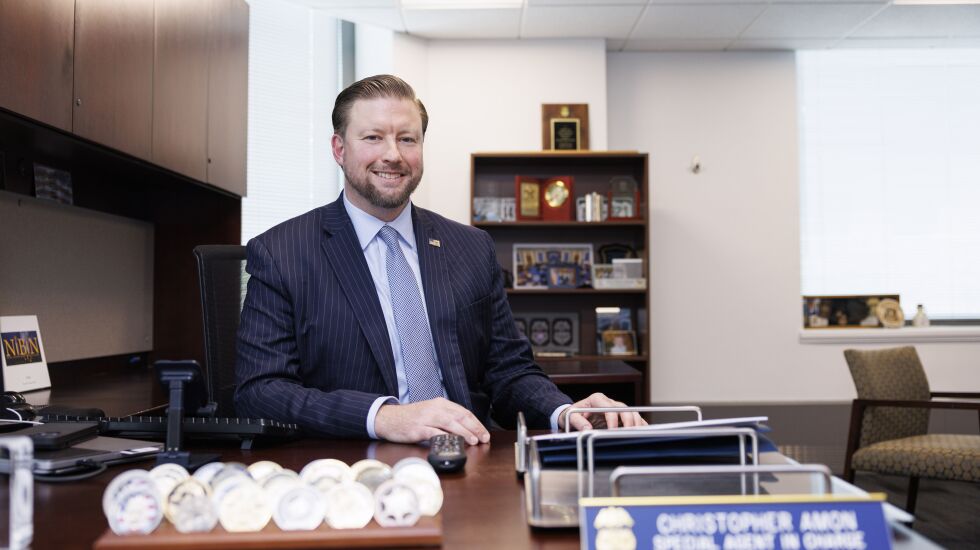
Christopher Amon sees a story behind every gun found at a crime scene — from where it was born to how it wound up in the wrong hands.
The nearly 20-year veteran of the Bureau of Alcohol, Tobacco, Firearms and Explosives said Chicago suffers from the same type of gun crime he’s seen elsewhere. Except here, police say they took more than 12,000 guns off the streets in each of the last two years.
“This is the most volume I’ve ever seen,” Amon said.
Now Amon, who has spent the last six months as the ATF’s special agent in charge in Chicago, wants to help better tell the stories behind all those weapons by opening a Crime Gun Intelligence Center downtown with the Chicago Police Department early in 2024.
It’s part of a burgeoning ATF effort built on its National Integrated Ballistic Information Network (NIBIN) and eTrace programs, each designed to help law enforcement quickly track the history of firearms used to commit crimes.
The Justice Department touted the opening of a similar center in central Ohio just last week. Deputy Attorney General Lisa Monaco said they “have proven to be uniquely effective tools for solving violent crimes, bringing repeat shooters to justice, and reducing the rate of gun violence.”
Amon spoke to the Sun-Times this month about his career at the ATF and his plans for the new center in Chicago. He said it would operate in a room staffed by analysts from multiple jurisdictions and potentially prosecutors.
The goal would be to trace guns and shell casings from crime scenes to connect them to others, quickly painting a picture for investigators and connecting detectives from different agencies.
The data could help investigators track down armed robbery crews or other serial offenders, Amon said. It could also be used in detention hearings to argue whether a defendant is a danger to the community.
“It basically would make sure that we’re connecting the dots, and we’re ensuring timely follow-up when we receive these leads,” Amon said. “So … if there’s a shooting that happens in Cicero that’s connected to Chicago, the Gun Crime Intelligence Center would make sure that those detectives are talking.”
The Chicago Police Department said in a statement that the center would be “distinct in that it is an interagency collaboration that solely aims to disrupt future violence through an expedited process of identifying armed, violent offenders for investigation and prosecution through ballistic evidence.”
As head of the Chicago field division, Amon oversees operations in northern and central Illinois, eastern Wisconsin and northern Indiana.
Tracing the history of firearms used in crimes is nothing new for the ATF. For example, the fatal shootings of Chicago police officers Ella French and Aréanah Preston quickly led to federal gun charges against individuals who had once been in possession of weapons tied to the officers’ deaths.
Amon spent part of his ATF career managing NIBIN, a program that dates back to 1997. But he said this new effort is “a matter of being comprehensive and urgent about it.”
A Crime Gun Intelligence Center is also in the works near Denver, where Amon began his ATF career. Mark Hildebrand, division chief for investigations at the Aurora Police Department in Colorado, said the volume of evidence gathered by his department there justified its own center, following previous collaboration efforts that included Denver’s center.
Having analysts and investigators in that same shared space — rather than communicating by phone, Zoom or other means — helps them all react to leads in real time, Hildebrand said. They can bounce ideas across the room and make sure no one is left out of the loop.
“It’s just much more fluid, and you’re developing those interpersonal relationships and trust between investigators,” he added.
Hildebrand told the Sun-Times he remembers Amon from his time in Colorado, and how Chicago’s new ATF chief rode with a gang unit there.
“He’s got a ton of knowledge and experience from the ground level,” Hildebrand said of Amon.
Amon grew up in Brooklyn. He said many of his friends became police officers or firefighters there after the Sept. 11, 2001, terrorist attacks. He said he wanted to serve at the ground level too, making a difference in people’s lives. In the weeks before the attack, he’d been working as an intern at the U.S. Department of Justice.
Ultimately, Amon made his way to the ATF.
“People always said they were the closest to being a street cop that you could be in federal law enforcement,” Amon said.

Nearly 20 years after the 9/11 attacks, Amon was back in Washington, D.C., serving as the ATF’s assistant special agent in charge there. That’s where he was working on Jan. 6, 2021, the day of the U.S. Capitol attack, which interrupted the Electoral College vote count and led to charges against more than 1,000 people for crimes ranging from misdemeanors to seditious conspiracy.
Amon said he was involved in the investigation of pipe bombs left outside the Republican and Democratic national headquarters, and clearing the Capitol after the riot.
Separately, he said he was also involved in the investigation that led to charges against Gerald Brevard, accused of killing homeless people in the nation’s capital as well as in New York City.
Amon said the charges in that case came about because of cooperation between law enforcement agencies and a “very robust intelligence operation.” It’s an example of the kind of work he wants to build upon in Chicago.
“That was a great example of identifying a serial shooter who was moving between two different cities and having to match the ballistics and work together,” Amon said.







